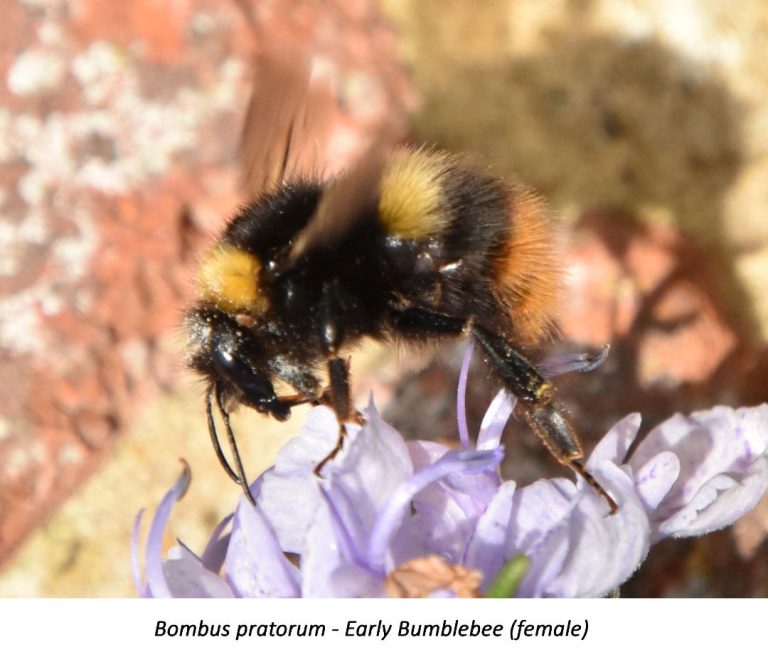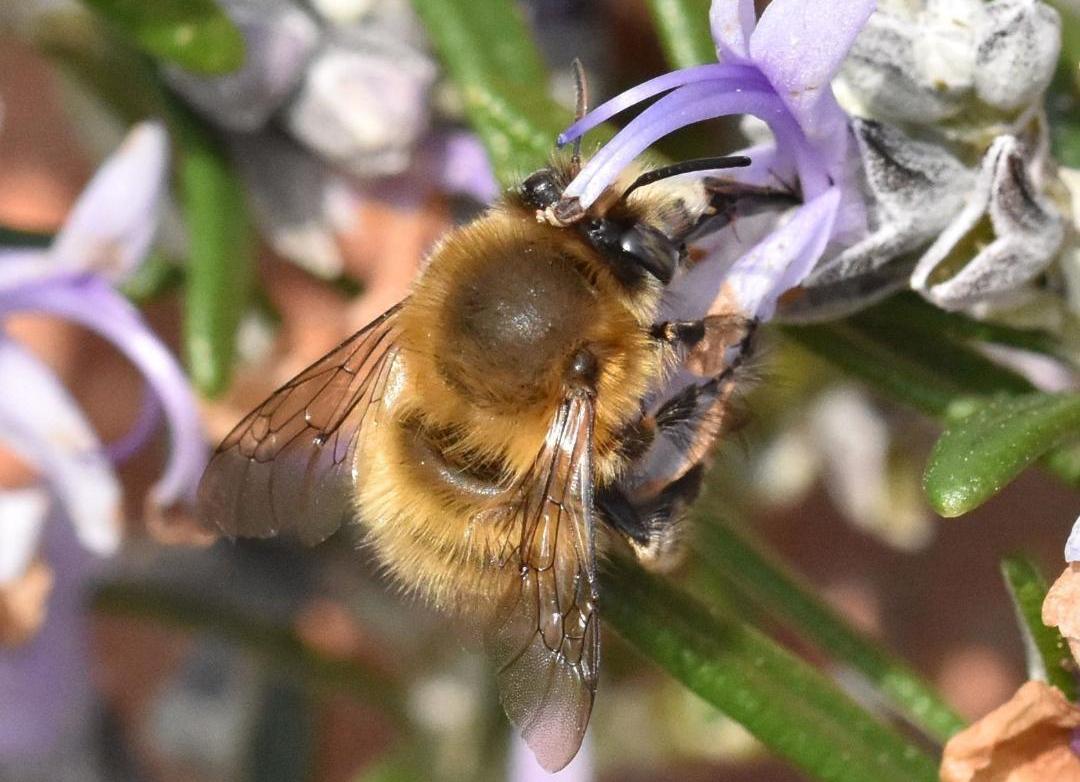‘How on earth can you tell the difference?’ said my Mother when I told her I had learned a few names of the bees in our garden. So thought I until the day when our world shrank to the confines of the garden gate at the beginning of the pandemic. There was no alternative but to become a little better acquainted with its inhabitants
Previous attempts when the large spikes of Lavender Intermedia were in flower in August had fizzled out. I had been defeated by their speed and such variety that it was impossible to memorise their shapes and colours quickly enough. They never matched the pictures or there were too many similar ones. Top of that list are the cuckoo bumble bees whose sole purpose in life is to deceive; using the same trick as their namesake, in the nest of another bee.
Begin to recognise their colours by counting their tails
I resorted to just counting the number of different ones and naming them by the colour of their tail, because that is mostly what we see. This is hugely rewarding and enables us to develop our own names to memorise several shades of yellow, orange, brown or beige, ginger, grey, white. Comparing their size and furriness is also easy.
However, counting them when the big spike lavender bush was in flower produced its own complications. By August many bees have faded colours, or are so worn and shaggy, they look like another species. The early female workers and the later males don’t exactly match a picture of their queen and many species have hibernated already.
It is still worth doing as it prompts us to check we have a variety of flower shapes every month to suit the bees and other pollinators of all sizes. Simple watching in order to count the species enables us to notice a bee favourite that needs to be divided to make a bigger clump because there is not enough for a good feed for more than one bee
It is worth mentioning that if they are feeding they are too busy to take any notice of us standing near or walking past. If necessary they will go round us if we stand still and don’t block their space.
The number of bees on the longers spikes of a shoulder high Lavender intermedia looks impressive but when there are more than 50 similar ones, it can become confusing.
Begin naming them in early spring
Then what made the difference in beginning to name them? In 2020 it was mid March when we all had to find a new interest.
The weather that year was mild so the bees were out most days and it was warm enough for us to linger. By beginning in March there were only the few early risers to watch. It was easy to follow one bee at a time as it moved around the garden following the shifting patches of the sun’s warmth from hour to hour.
The plant which fed the most early bees was Rosemary where several are pruned to grow up a fence to eye level. The extra shelter allows the flowers to open earlier in March or even all year and the bees can choose blossoms within the warmer centre of the bush. As the shadows moved the bees moved to the next bush. On a warmer day they ventured onto a bush which is normally draughty.
Each week a new bee appears from hibernation or from last summer’s egg cavity. A quick leg stretch round the garden 4 or 5 times a day in sunshine, with the zoom on a phone camera or (in my case) reading glasses in my pocket ensures we don’t miss a new sighting.
Each new flower brought a new small solitary bee back to feed on the same plant every day. Some I had never seen in the summer as their season had ended or their flower had finished.
Naming some of them involves a lot of page turning or scrolling. However it isn’t the most essential task for gardeners. What does matter is that we are surprised by the variety of colours, shapes, preferred flowers and individual habits of the solitary bees. It is sufficient to make up our own names in the meantime.
Just counting the species is enough to remind us to keep adding new flowers for each month so that bees of all sizes have a varied diet with their long or short tongues catered for with flowers of different shapes.
Mike also recommends the following observation
webpage/app
Melene








